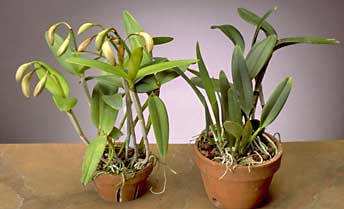Joyce Heasley
Adams County Master Gardener
 The key to successful gardening is: The Right Plant for the Right Location. When deciding where to do our plantings, whether vegetables or flowers, we need to consider soil conditions, moisture, and light. This article is about light. Plants get their energy from light to begin
the process of photosynthesis. Plants have different requirements in the amount of light needed to begin this process. Sun-loving plants require a lot of bright, direct light while shade-tolerant plants will photosynthesize with light lower in intensity.
The key to successful gardening is: The Right Plant for the Right Location. When deciding where to do our plantings, whether vegetables or flowers, we need to consider soil conditions, moisture, and light. This article is about light. Plants get their energy from light to begin
the process of photosynthesis. Plants have different requirements in the amount of light needed to begin this process. Sun-loving plants require a lot of bright, direct light while shade-tolerant plants will photosynthesize with light lower in intensity.
Light is a tricky thing. Light and shade are constantly moving, and the degree and intensity of sun or shade can change with the season or even the time of day. The amount of light our gardens receive will be different during the spring months and during the summer months due to the sun’s location in the sky and the intensity of the sunlight. For
example, in the spring we may have a lot of light under deciduous trees that have not leafed out and then have dense shade under the same trees in July.
 Generally, plant’s light requirements fall into four categories: full sun, partial sun, partial shade, and full shade. When we buy seeds or plants, this information is provided on the seed packet or the plant tag. Full sun is at least 6 hours of unobstructed direct sun. Partial sun and partial shade are often used interchangeably and mean 3-4 hours
of sun/shade each day, preferably morning and early afternoon sun. Full shade is bright light but little or no direct sun.
Generally, plant’s light requirements fall into four categories: full sun, partial sun, partial shade, and full shade. When we buy seeds or plants, this information is provided on the seed packet or the plant tag. Full sun is at least 6 hours of unobstructed direct sun. Partial sun and partial shade are often used interchangeably and mean 3-4 hours
of sun/shade each day, preferably morning and early afternoon sun. Full shade is bright light but little or no direct sun.
This all seems fairly clear, yet when we try to determine these areas in our gardens, it can get confusing. Exactly how much sun is this area getting; is this area too shady for this plant? Full sun is the easy one. If an area is located where it is receiving sun for most of the day, then you will want to use plants that thrive in full sun. But
what is the difference between partial sun and partial shade? Sounds the same. Partial sun is unobstructed sun in the morning and shade during the hot afternoon. Partial shade is less than 3 hours of direct sun during the coolest part of the day (morning) and dappled or open shade in the afternoon. Still sounds like the same requirements. The difference is the intensity
of the light. Plants suited for partial sun must receive the required 3-4 hours of direct morning sun and shade in the hot afternoon. Plants suited for partial shade need less direct morning sun and must have a longer period of shade during the afternoon. The emphasis of light is the difference. For partial sun plants, the emphasis must be on the amount of sun it
receives; for partial shade plants, the emphasis must be on the amount of shade it receives. The last category, full shade, is fairly easy also as these plants require less than two hours of dappled sunlight or no direct sunlight at all.
If you need, or want, to be more precise in determining the amount of light a particular area is receiving, you can use a light meter. They are sold at some of the local garden centers. Most of the light meters I have seen use the footcandle hours method to measure the light intensity. According to Dictionary.com, the definition of a footcandle is
"a unit of illumination, equivalent to the illumination produced by a source of one candle at a distance of one foot and equal to one lumen incident per square foot." More simply put, it is a way to measure light intensity in a square foot area. This same method is used in television or movie studios, photography, or museums where controlled lighting is necessary.
To use a light meter in your garden, you will need to take readings in the mid-morning, mid-afternoon and early evening to determine the average light intensity. Because light intensities are different between the spring and summer months, you will need to continue to take these readings throughout both seasons. Then you can compare the average
footcandle hours your garden receives with the number of footcandle hours needed in each of the full sun, partial sun, partial shade, shade categories. This information will be included with the light meter instructions. This may sound tedious; but it might be a helpful method to use in order to assure you have the right plant for the right light.
However you choose to determine the proper amount of light available in the areas where you will be planting, it’s clear that the more you know about your garden's light concentrations, the more successful a gardener you will be.
Read other articles on garden and landscape design
Read other articles by Joyce Heasley